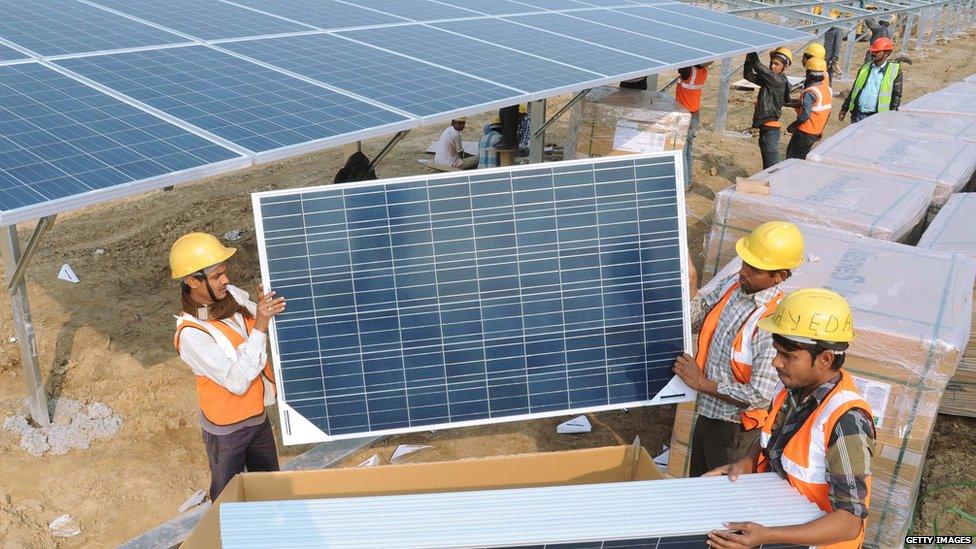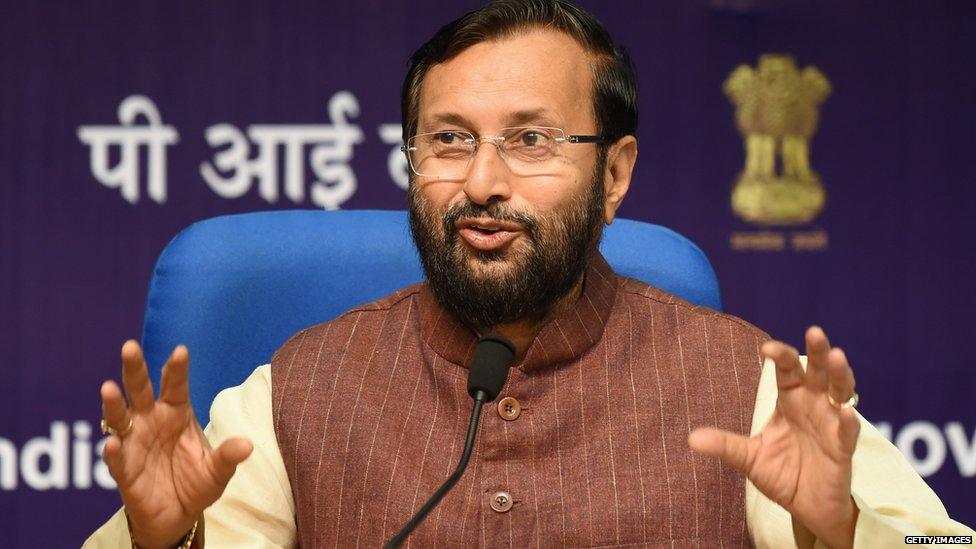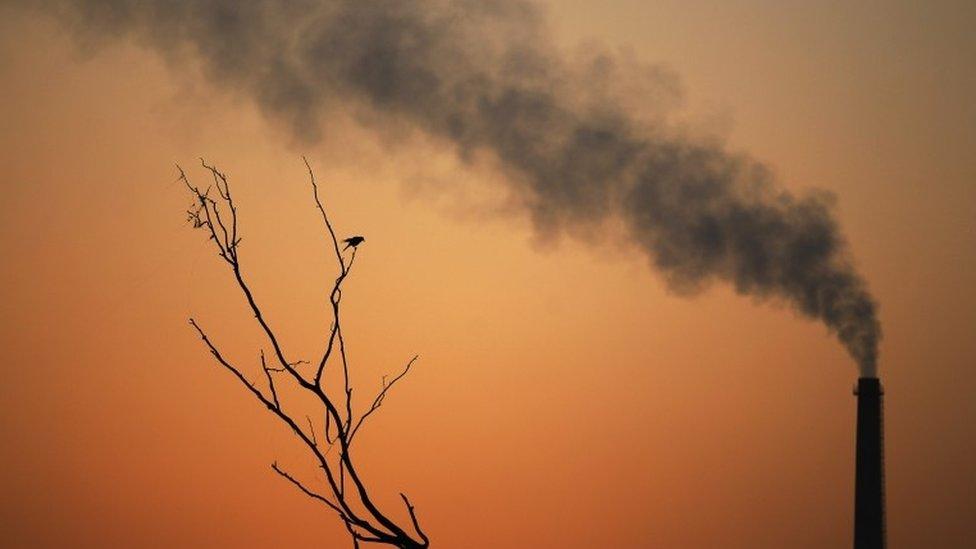UN battle looms over finance as nations submit climate plans
- Published

India's climate plan will see a big expansion of solar power but coal use will also grow
Divisions over money between rich and poor countries re-emerged as nations submitted their plans for tackling climate change to the UN.
India, the last big emitter to publish its contribution, said it would need $2.5 trillion to meet its targets.
The Philippines said that without adequate climate compensation, their cuts in emissions wouldn't happen.
The UN says the plans increase the likelihood of a strong global treaty.
148 countries, out of a total of 196, have met a UN deadline, external for submitting a plan, termed an Intended Nationally Determined Contribution (INDC).
These INDCs cover close to 90% of global emissions of carbon dioxide. The commitments will form the centrepiece of a new global agreement on climate change that nations hope to agree in Paris in December.
Independent analysts at the Climate Action Tracker said that the plans, when added up, external, meant the world was on track for temperature rises of 2.7 degrees C above pre-industrial levels.
This is above the 2 degree target generally accepted as the threshold for dangerous climate change. But it is a significant improvement on a previous assessment of 3.1 degrees, made when fewer plans had been submitted.
India's contribution, which promised to reduce the carbon intensity of their emissions but didn't commit to peaking their CO2, drew praise from around the world.
"It's highly significant that India is joining the ranks of so many other developed and developing countries in putting serious commitments on the table ahead of the Paris climate talks," said former UK environment minister Richard Benyon MP.
Scary numbers
But many environmentalists were critical, saying the plan would see a "phenomenal increase" in the use of coal.
"We're especially disappointed to not see a concrete renewable target," said Pujarini Sen from Greenpeace India.
"They are talking about 40% of electric power coming from non-fossil sources by 2030. This is not 40% renewable energy, it includes nukes, it includes large dams."
The plan says that India's transition will cost $2.5 trillion, a "scary number" according to one observer.
It is unclear how much of this money will come from India's own resources and how much from the international community and investment.
In their written submission, India's proposed climate actions appear to be contingent on getting much of this money from richer countries: "The successful implementation of INDC is contingent upon an ambitious global agreement including additional means of implementation to be provided by developed country parties."

India's environment minister Prakash Javadekar says that climate change will cost trillions not billions
Developed countries have committed to $100bn of funding for developing countries to deal with climate change by 2020, but India's environment minister suggested the bill was going to be a lot bigger than that.
"I am telling the world that the bill for climate action is not just $100bn; it is in trillions of dollars per year," said Prakash Javadekar.
"Countries will take up their own responsibility; but the world that is historically responsible for carbon emissions, what we are suffering today, the climate change - they must at least walk the talk on $100bn."
Some observers believe that India and others are using the INDCs to begin the negotiation process and to highlight how important money is, especially to developing countries.
"The thing that has the least clarity in this process is the finance issue," said Liz Gallagher from environmental think-tank E3G.
"They are kind of using the INDCs to really deliver that message. It's a big prod to the developed countries to wake up because they haven't sorted this yet."
Several countries in their submissions also pointed to the question of loss and damage.
This issue has become highly contentious in recent years as developing countries have sought some form of compensation for the ongoing impacts of a changing climate. The richer nations have strongly resisted this idea, fearing a legal liability.
The Philippines was quite clear in linking their plans to slash emissions by 70% by 2030 to getting money for loss and damage.
"The Philippine INDC assumes that loss and damages from climate change and extreme events will not require diversion of substantial resources for rehabilitation and reconstruction thereby adversely affecting the country's capacity to meet national development targets," they said in their submission.
Other countries have put a figure in their INDCs on the amount of loss and damage they have suffered in recent years. Serbia, for example, says that in the period between 2000 and 2015, it suffered losses of 5bn euros thanks to floods and droughts.
This focus on loss and damage means that it is likely to feature heavily in the negotiations in Paris.
"There are some legal red lines for many countries, including the US, around the form of compensation and what that would mean," said Liz Gallagher.
"But as a rational and a political choice, loss and damage has to be at the heart of the agreement and that is going to be an important challenge."
Negotiators will meet in Bonn later this month to review a draft of a new deal ahead of the Paris meeting a month later.
Follow Matt on Twitter: @mattmcgrathbbc, external
- Published2 October 2015

- Published25 September 2015
- Published16 September 2015
- Published9 September 2015
- Published25 August 2015

- Published11 August 2015